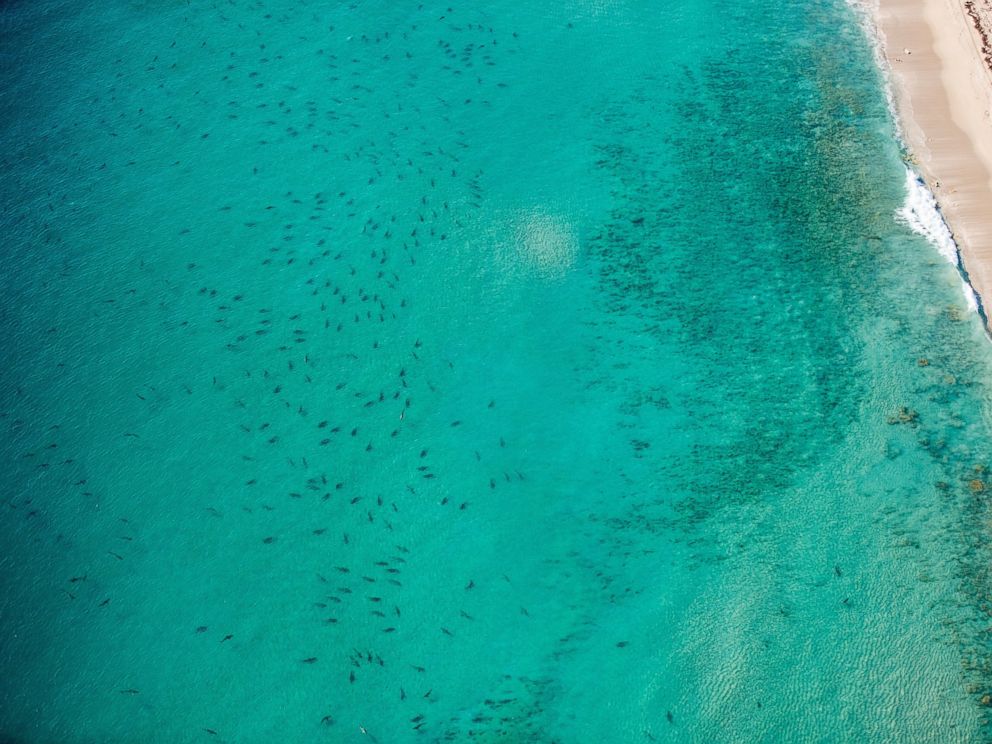
Heck. They're only little ones.
While there are thousands of sharks in the waters, it hasn’t deterred people from going to the beach. Lifeguards have not shut down any beaches yet, according to Kajiura, and most of the locals in the area know this is when the sharks are around and what precautions to take.
Read more @ Thousands of Sharks Clog Coastline of Florida



